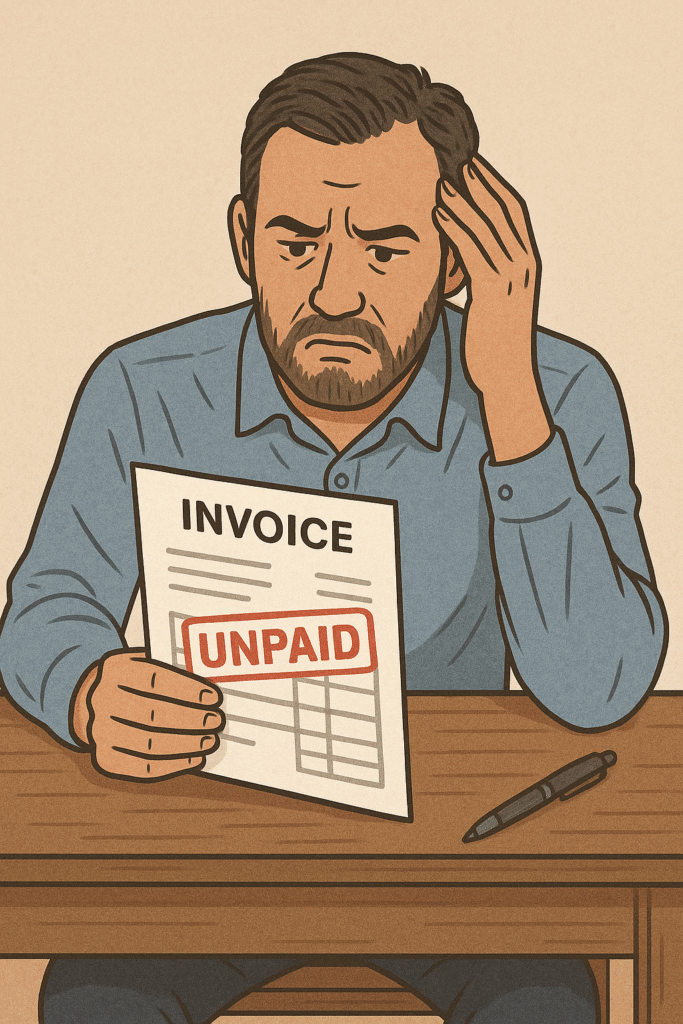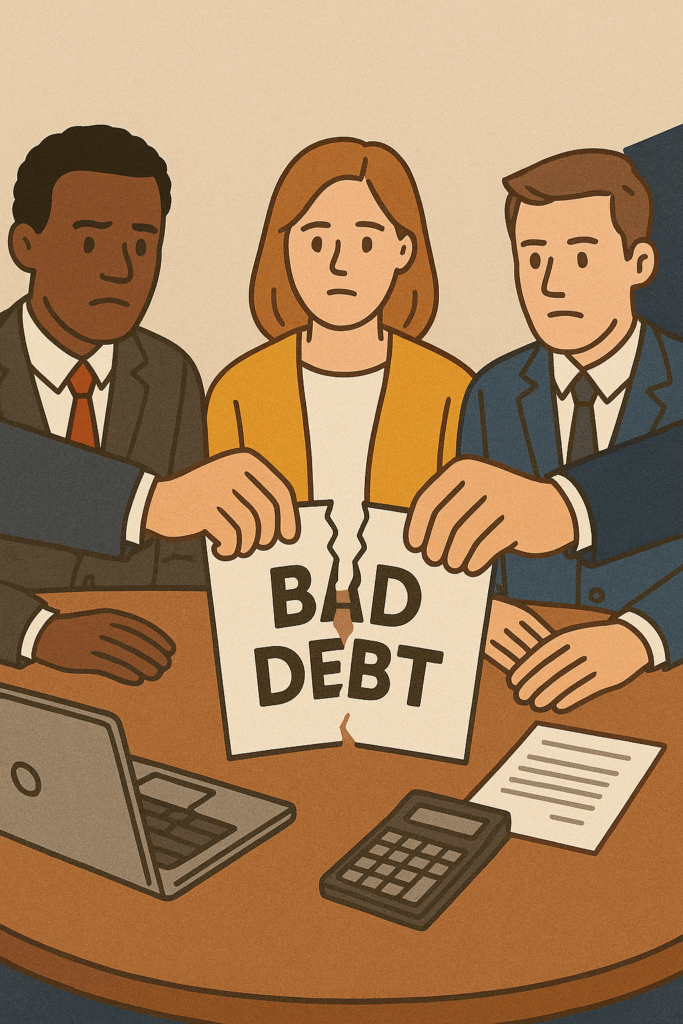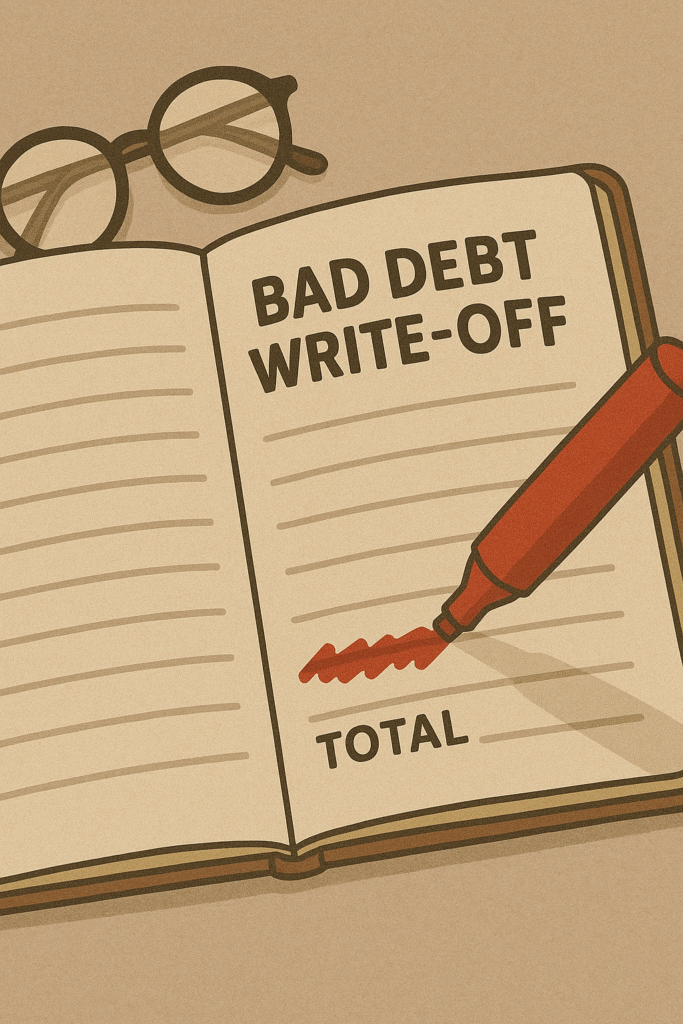
What I’ve Learned in 20 Years
A 20-year finance pro shares simple steps to handle unpaid debt, avoid tax issues, and protect your business.
Ever had a client vanish without paying? You’re not alone.
You sent the invoice. You followed up. Maybe even called a few times. But now—it’s crickets. No payment. No response. Just stress.
As someone who’s managed credit and accounts receivable for over 20 years, I’ve been there more times than I’d like to admit. But I’ve also learned how to deal with it smartly—without letting it wreck your cash flow or peace of mind.
Let me walk you through how to write off bad debt, what to do with unpaid invoices, and the biggest small business debt mistakes I’ve seen.
Part 1: Why Bad Debt Happens
Let’s keep it real—bad debt is part of doing business. But knowing why it happens can help you avoid it next time.
The Vanishing Vendor
We once had a small retailer order bulk products. They seemed legit—website, store, regular emails. We shipped. They disappeared. Later found out they’d shut down and ghosted everyone. No warning.
The Chronic Late-Payer
This client always paid—eventually. Then one day, they didn’t. We waited months before acting, only to discover they’d filed for bankruptcy.
The “Nice” Client Trap
We trusted them because they were “nice.” Big mistake. They kept promising to pay. We let it drag for a year. In the end, we wrote it off—and learned to separate charm from creditworthiness.
Why it matters:
- Business fail.
- Client hit hard times.
- People just don’t pay.
How to Write Off Debt Without Breaking the Rules

Writing off bad debt isn’t just deleting a line in Excel—it needs a process.
Here’s how to write off bad debt properly:
Step 1: Make Sure It’s Really Uncollectible
No payment in 90+ days No response after multiple follow-ups You’ve tried collections or legal notice
Step 2: Document Everything
Invoices Follow-up emails Notes from calls Returned mail keep it.
Step 3: Use Accounting Software or Manual Entry
In QuickBooks: Use the “bad debt” expense account For spreadsheets: Create a “Write-Off” line item with date & amount
Step 4: Understand Tax Rules for Bad Debt
In many countries (like the US), only accrual-based businesses can write off bad debt for taxes See IRS guidance on bad debt
Step 5: Inform Your Team or Accountant
Let them know it’s being written off—so they don’t keep chasing payment
Mistakes I’ve Seen (and How to Avoid Them)

Here are some common (and costly) mistakes small business owners make:
Mistake #1: Waiting Too Long to Act
You want to be nice. But 6 months later, you’re still waiting. If it feels wrong—it probably is.
Mistake #2: Not Documenting Communication
If it’s not in writing, it didn’t happen (especially in audits or court).
Mistake #3: Confusing Late Payments with Bad Debt
Someone who pays late isn’t necessarily a write-off. Follow up regularly—but be firm.
Mistake #4: Writing Off Before Trying Collections
Use a friendly collection letter, or try a low-cost service first.
Part 4: What I Wish I Knew 20 Years Ago
Here’s what would’ve saved me a lot of time and money:
Always Check Creditworthiness: Use tools like CreditSafe or local credit reports before offering terms Set Payment Terms in Writing: Net 15 or Net 30—put it in your contracts Use Simple Tools: Try a free invoice template with due dates and late fees Have a Plan for Slow Payers: Offer partial payments Suggest payment schedules Pause future work until payments clear
Don’t Let Bad Debt Scare You
Writing off bad debt is like cleaning out your closet—it hurts now, but you’ll breathe easier later.
You’re not failing. You’re just being smart.
Handle it, document it, and learn from it.
Quick FAQ
Q: Can I write off debt after 1 year?
A: Yes, but only if you can prove it’s uncollectible and you haven’t already deducted it. For tax purposes, timing matters—check your country’s tax rules or ask your accountant.
Q: What if I get paid later after writing it off?
A: That’s called a “recovery.” Record it as income in the year you receive it.
Q: Can freelancers or small service providers do this too?
A: Absolutely! Just make sure your bookkeeping supports the write-off.
